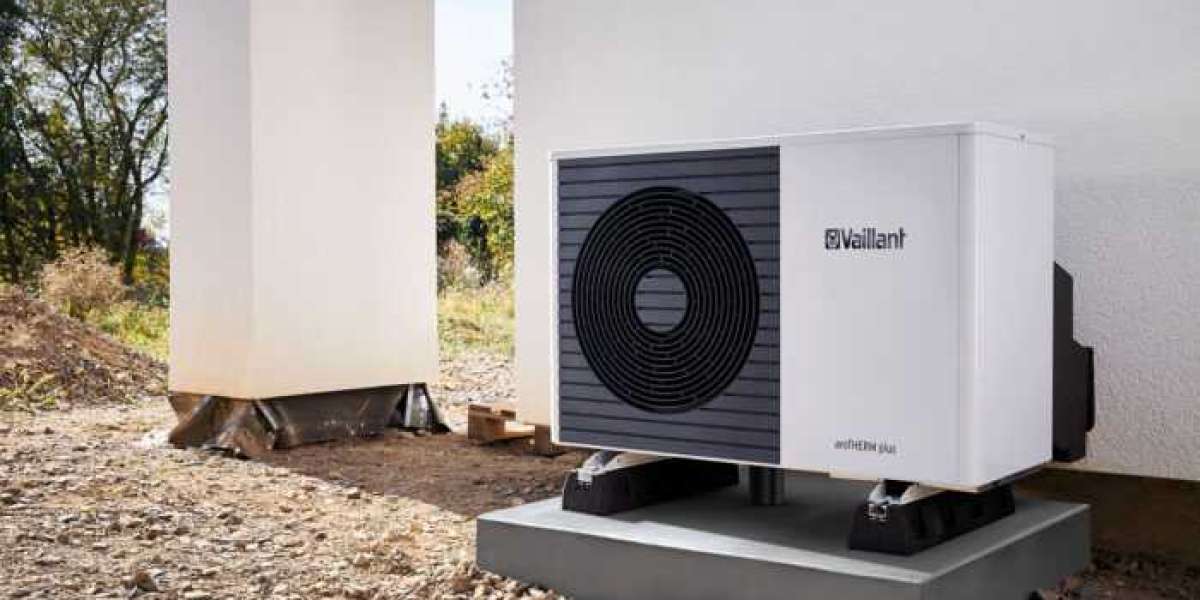An air-source heat pump is an efficient and eco-friendly way to heat your home without needing a traditional gas or electric heating system. If you want to reduce your heating bills while doing your bit for the environment, you can access a free air source heat pump grant under the government ECO4 scheme, available for low-income households. However, the noise level is one common concern causing hesitation when switching to air-source heat pumps.
In this article, we'll discuss air-source heat pumps' noise and dispel the idea that they are too loud. Read on to learn about the factors that raise and lower noise levels, the technological advances that have made them quieter, and some valuable tips on reducing noise for a more peaceful home.
How do Air Source Heat Pumps Work?
An air source heat pump moves heat from the outside air into a room. A fan brings air from outside into the heat pump's condenser. The internal movement of the coolant in the pump changes its shape and makes it evaporate, even when the temperature is low. A compressor squishes down the refrigerant gas until it hits the proper heating and hot water temperature. This process sends heat to your home's heating and hot water systems.
Debunking the Noise Myth
Noise Levels
Modern air-source heat pumps are made to run quietly but aren't entirely silent. The noise level is usually between 40 and 60 decibels from one meter away. This sounds about the same as a refrigerator or a conversation in a quiet room. While both make noise about the same loudness as a heater, you are less likely to hear the noise from a heat pump because it is outside.
It's important to know that the noise levels of air-source heat pumps depend on the type and how they are installed.
Advancements in Technology
This idea comes from older, louder models of air-source heat pumps. However, technological changes have greatly affected how noisy things are. To make heat pumps quieter generally, makers have added things like better insulation, less shaking, and quieter fan and motor designs.
Regulations and Standards
Noise limits have been established to ensure that air-source heat pumps don't disturb the peace in residential areas. The location of the outside unit is carefully considered during the installation procedure to reduce noise annoyance to nearby properties.
Installing the heat pump as far away from windows and bedrooms as feasible is recommended.
Noise Perception
It is crucial to recognise that everyone perceives noise differently and is subjective. Something that one person finds boisterous could be fine to another. An air source heat pump's noise level should be evaluated considering individual preferences and sensitivities.
Factors Affecting Noise Levels
Various factors influence the noise levels of air-source heat pumps. If you're thinking about installing a heat pump in your house, you should be aware of the following factors:
1- Type and Model
Different types and models of air source heat pumps have varying noise levels. Researching and choosing a model that explicitly emphasises low-noise operation is advisable.
2- Installation Location
The location of the outdoor unit is a big part of how quiet it is. Install the heat pump away from windows, beds, and houses next to yours to ensure you enjoy its benefits without hearing it. This will also help lower the amount of noise that you hear.
3- Vibration and Mounting
With the proper placement methods, like anti-vibration mountings and isolators, vibrations and sounds in the surrounding areas should be lowered. So, to install an air source heat pump, you should only hire skilled and experienced professionals. They can work with you to ensure the installation meets your needs and makes as little noise as possible.
4- Maintenance
The heat pump must be serviced and maintained regularly to work well, last a long time, and not make noise. Greasing the moving parts, cleaning the outdoor unit, and checking for broken parts can make it run more quietly.
Explore Practical Tips for Minimising Noise
1- Choose a Quiet Model
Choose an air source heat pump model that operates at a low noise level. Manufacturers frequently provide product noise level standards, enabling you to make an informed choice.
2- Optimal Positioning
Working closely with a skilled contractor will help determine where your heat pump should go during installation. Think about the space between your home, windows, other homes, and other things that might make noise bothersome.
3- Acoustic Enclosures
Noise levels can be significantly decreased by using acoustic enclosures outside mechanical equipment. To comply with noise laws, these enclosures reduce sound while meeting airflow requirements.
4- Anti-Vibration Measures
Implementing anti-vibration mountings and isolators can reduce noise transmission and vibrations, lessening the buzzing noise that air source heat pumps are known for.
5- Regular Maintenance
Maintain and fix your heat pump daily to ensure it works at its best. This means checking the outdoor unit for broken parts, cleaning it to ensure no leaves are stuck, and acting quickly if it hears something strange. By doing these easy things, you can reduce noise issues and get the most out of an air-source heat pump.
Summary
Many people think air-source heat pumps are loud, but that's not true. Modern technology advances and skilled construction methods have significantly reduced noise levels. You can make your living space more peaceful and comfortable by choosing a low-noise model, carefully putting the outdoor unit, and adding measures to stop vibrations.
Making the switch to green energy doesn't have to be loud. Air-source heat pumps are a quiet way to heat your home, and they use less power and come from renewable sources.






